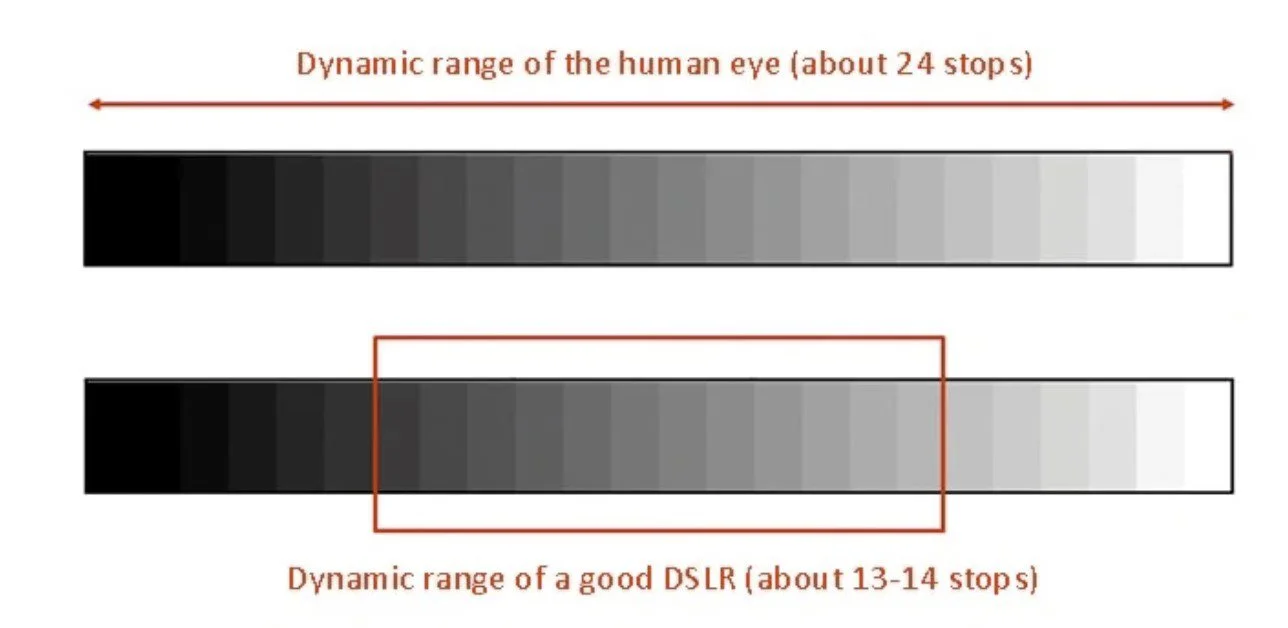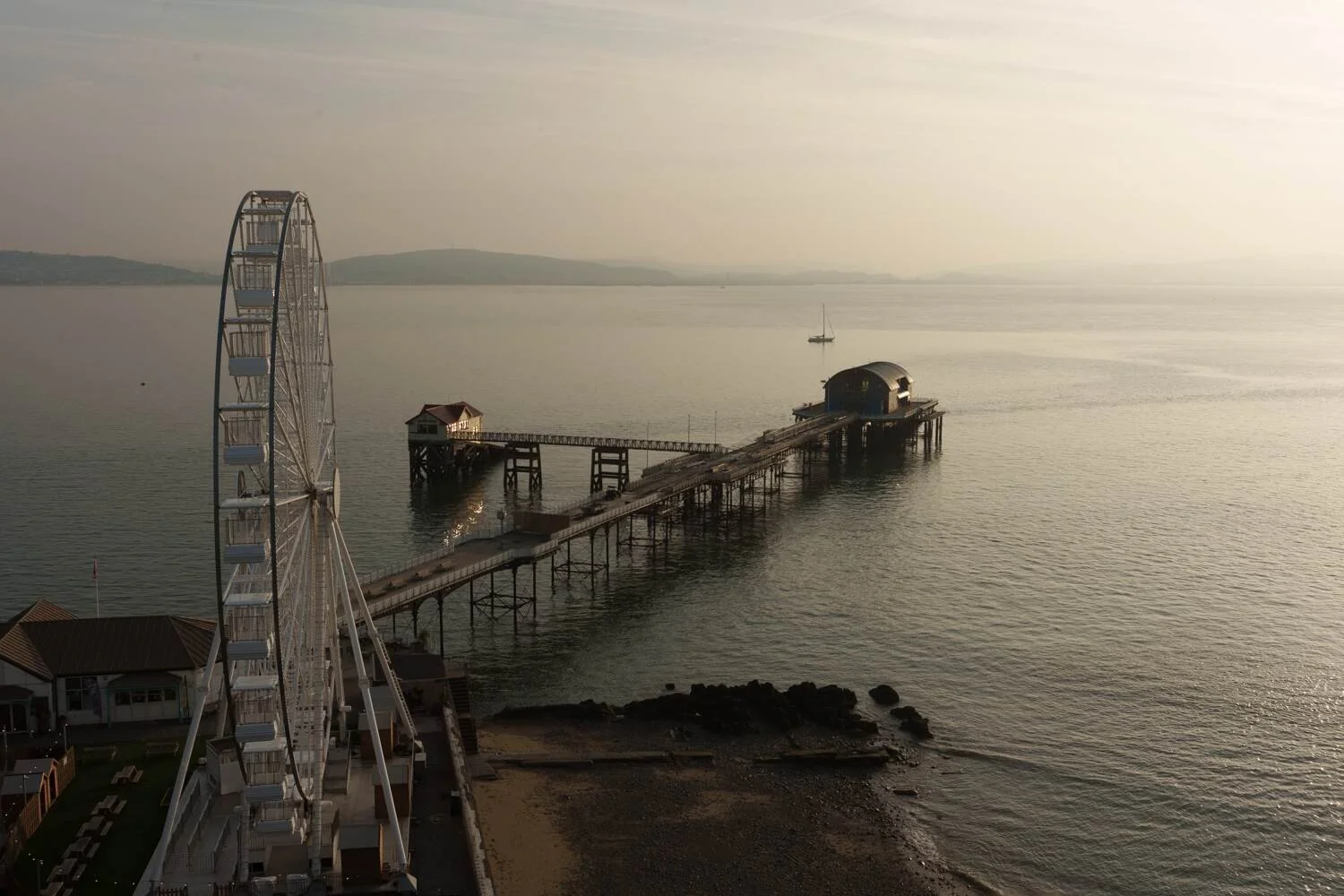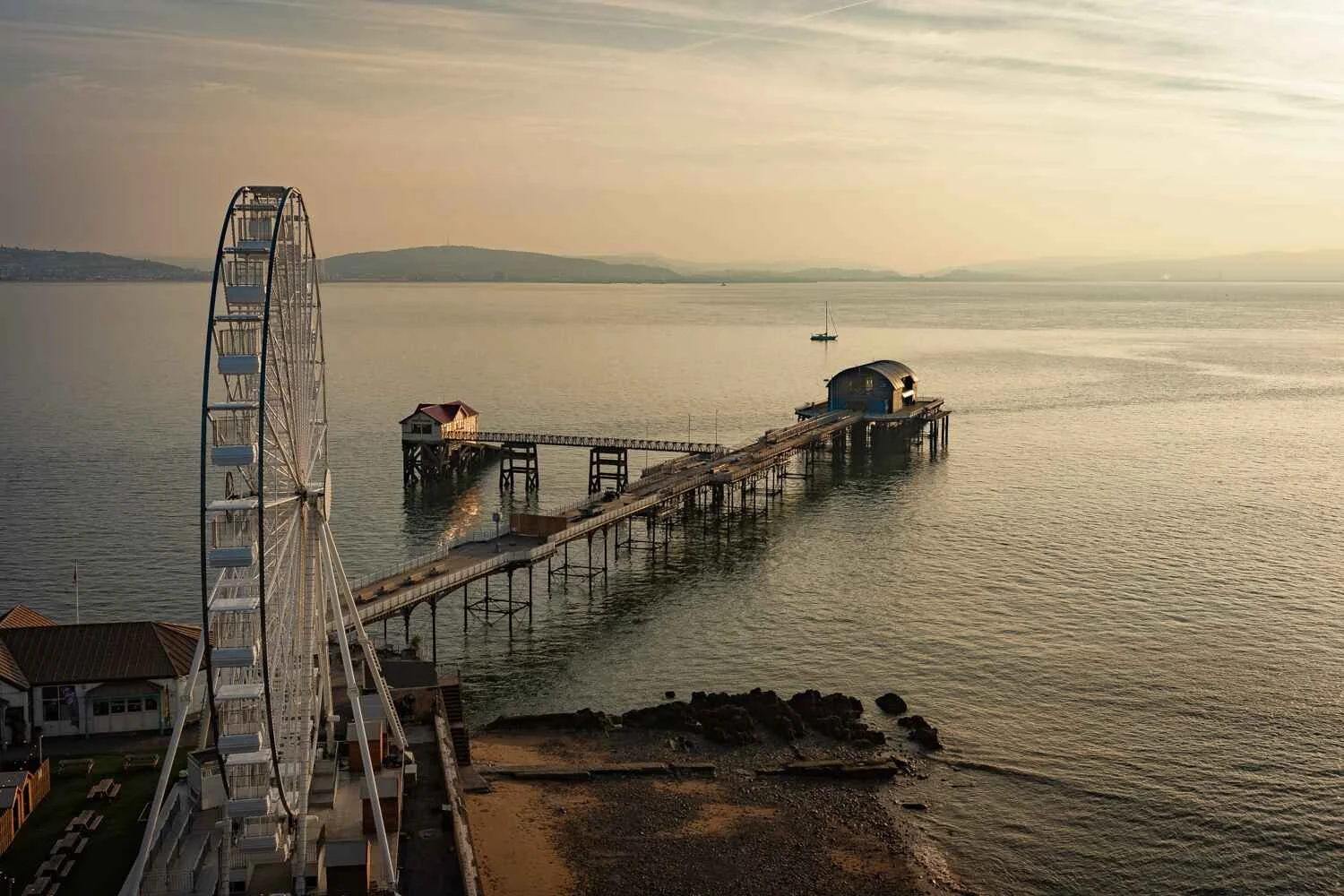10 What is DYNAMIC RANGE in photography: A Beginners Guide
Table of Contents Show
As a photographer, have you ever marvelled at how sunlight dances across a landscape, creating a tapestry of highlights and shadows? Or perhaps you've struggled to capture the subtle details in both the brightest and darkest areas of a scene. If so, you've encountered the concept of dynamic range - a fundamental aspect of photography that can make or break your images.
What is Dynamic Range In Photography?
Dynamic range in photography refers to the range of light intensities a camera can capture in a single exposure, from the darkest shadows to the brightest highlights. The camera can essentially see and record detail across a spectrum of luminosity.
Imagine standing at the edge of a forest at sunset. Your eyes can perceive the rich, dark greens of the shadowy undergrowth while simultaneously taking in the brilliant oranges and reds of the sky. This is your visual system's dynamic range at work. But can your camera capture all of that information in one shot?
The Technical Nitty-Gritty
For the more technically inclined, let's dive deeper. Dynamic range is typically measured in stops or exposure values (EV). Each stop represents a doubling or halving of light intensity. Modern digital cameras can typically capture between 12-14 stops of dynamic range, with some high-end models pushing beyond 15 stops.
Here's where it gets interesting: the human eye can perceive a dynamic range of about 20 stops in a single glance and up to 24 stops when accounting for pupil adjustment. This disparity between what we see and what our cameras can capture is at the heart of many photographic challenges.
Dynamic Range in Action
Landscape Photography: Nature's High Contrast Canvas
Landscape photography often presents scenes with extreme ranges in light. Picture a mountain vista with deep, shadowy valleys and snow-capped peaks reflecting bright sunlight. This scenario can easily exceed your camera's dynamic range capabilities.
Pro Tip: In high-contrast landscape scenes, try bracketing your exposures. Take multiple shots at different exposure levels and blend them in post-processing to capture the full dynamic range of the scene.
Shot at 1/1600 sec to capture highlight details
Shot at 1/400 sec
Shot at 1/100 sec to capture shadow details
Three exposures blended together in Adobe Lightroom
High-Contrast Urban Scenes: The City's Light and Shadow Play
Urban environments, with their mix of bright lights and dark alleys, are another playground for exploring a challenging range of light. A nighttime cityscape can push your camera to its limits, challenging you to balance the glow of street lamps against the inky blacks of shadowed buildings.
Low-Light Situations: When Every Photon Counts
In low-light photography, such as astrophotography or dimly lit interiors, the light range becomes crucial. Your camera needs to capture faint light sources without blowing out brighter areas. This is where the quality of your camera's sensor really shines (pun intended!).
Working with Light Stops
Understand Your Camera: Each camera model has its own dynamic range capabilities. Experiment with your gear to learn its limits.
Use HDR Techniques: High Dynamic Range (HDR) photography involves taking multiple exposures and combining them to extend the captured range of light, known as exposure bracketing.
Embrace the Histogram: Your camera's histogram is a powerful tool for understanding light distribution in your scene. Learn to read it and use it to your advantage. Read my post of exposure
Shoot in RAW: RAW files contain more data than JPEGs, giving you greater flexibility in post-processing to recover highlights and shadows.
Master Exposure Compensation: Sometimes, intentionally under or overexposing can help you capture more detail in highlights or shadows.
Take a look at the NEW outdoor exposure calculator tool
The Art of Using The Large Range of Light
While understanding the technical aspects of dynamic range is important, remember that photography is an art form. Sometimes, embracing the limitations of the range can lead to striking, high-contrast images that convey mood and drama.
Consider the work of legendary landscape photographer Ansel Adams. His mastery of light through his Zone System resulted in images with incredible tonal range, from the deepest blacks to the brightest whites, each conveying rich detail and texture.
Pushing the Boundaries
As camera technology advances, we're seeing incredible improvements in sensor range capabilities. The latest sensors are pushing closer to the human eye's abilities, opening up new creative possibilities.
But remember, great photography isn't just about capturing everything the eye can see. It's about interpretation, emotion, and storytelling. Understanding light is a tool in your artistic arsenal - use it wisely to create images that not only capture a scene but convey your unique vision. It will also be beneficial to understand what do camera filters do to help improve the capture of a high dynamic range.
Conclusion:
Understanding and mastering light is a journey that will transform your photography. It's about seeing light in new ways, understanding the interplay of shadows and highlights, and learning to work with (or against) the limitations of your equipment.
So the next time you're out shooting, take a moment to really look at the light. See the subtle gradations, the play of highlights and shadows. Then, armed with your knowledge of the dynamic range, capture that scene in a way that tells your story.
Remember, every great photograph is a dance between light and shadow. Dynamic range is your invitation to that dance. Will you accept?
FAQs
Q1: What is dynamic range in photography?
A1: Dynamic range in photography refers to the range of light intensities from the darkest shadows to the brightest highlights that a camera sensor can capture. It essentially measures how well a camera can handle scenes with both very bright and very dark elements without losing detail in either.
Q2: Why is dynamic range important in photography?
A2: Dynamic range is crucial because it determines how well a camera can capture a scene with varying light levels. A camera with a high dynamic range can record more details in both the shadows and highlights, resulting in more realistic and vibrant images. It is especially important for landscape photography or scenes with strong contrasts.
Q3: How is dynamic range measured?
A3: Dynamic range is typically measured in stops. Each stop represents a doubling or halving of light. For example, if a camera has a dynamic range of 12 stops, it can capture a range of light intensities from the darkest areas (shadow details) to the brightest (highlight details) in a scene.
Q4: What factors affect a camera's dynamic range?
A4: Several factors can influence a camera's dynamic range, including:
Sensor technology: Different sensor designs (CCD vs. CMOS) and sizes can impact dynamic range.
Bit depth: Cameras with higher bit depths (e.g., 14-bit vs. 12-bit) can capture more levels of brightness and color.
Post-processing: Techniques like HDR imaging can extend the perceived dynamic range of an image by combining multiple exposures.
Q5: Can I improve the dynamic range of my photos in post-processing?
A5: While you can't change the inherent dynamic range of your camera, you can use post-processing techniques to enhance your photos. High Dynamic Range (HDR) imaging allows you to blend multiple exposures of the same scene to capture a wider range of light intensities, bringing out details in both shadows and highlights.
Q6: How does dynamic range differ between cameras?
A6: Different cameras and sensors exhibit varying levels of dynamic range. Generally, higher-end DSLRs and mirrorless cameras tend to have better dynamic range than entry-level or compact cameras. Full-frame sensors often outperform crop sensors in dynamic range due to their larger size, which allows for more light capture.
Q7: What are the signs of low dynamic range in my photos?
A7: Photos taken with a low dynamic range may display blown-out highlights (areas that are pure white with no detail) or blocked-up shadows (areas that are black with no detail). This results in a lack of tonal variation and can make an image feel flat or uninteresting.
Q8: Is dynamic range the same for all photography genres?
A8: While dynamic range is essential across all photography genres, its significance may vary depending on the context. For instance, in portrait photography, the focus may be on skin tones and softer lighting, whereas in landscape photography, capturing a wide dynamic range can be vital to show the details in both the sky and the ground.
Q9: What is the dynamic range of the human eye compared to cameras?
A9: The human eye has an impressive dynamic range, estimated to be around 20 stops or more. This allows us to perceive a wide range of light and dark in a single glance. Cameras, however, typically have a more limited dynamic range, usually between 10 to 15 stops for most consumer models, which is why careful exposure techniques are necessary to capture scenes effectively.
Q10: What techniques can help me handle dynamic range in my photography?
A10: To manage dynamic range in photography, consider the following techniques:
Use graduated neutral density filters to balance exposure between bright and dark areas.
Employ bracketing techniques to create HDR images.
Carefully plan your shooting time, using golden hour light to minimise harsh contrasts.
Learn to use camera settings like exposure compensation effectively to capture details in shadows or highlights.
Written By Alan Ranger
Alan is a professional photographer and tutor with over fifteen years of experience delivering photography education and commercial photography services across the UK.
-
Alan Ranger's exceptional professional credentials, accredited by the BIPP (British Institute of Professional Photography), have earned him the esteemed status of an approved photography training provider for renowned brands like Jaguar Land Rover. Moreover, he has had the privilege to deliver more than 30 enlightening lectures on photography education at the prestigious Xposure International Photography Festival in the UAE.
In addition, Alan has mentored and taught over 5,000 photography enthusiasts over the last fifteen years. Through his varied service approaches suited to each individual.
-
Beyond his professional pursuits, Alan has also collaborated with schools to organise photography workshops for children with special needs. By providing them with this platform, he empowers them to express themselves creatively and discover their unique perspectives through a camera lens.
-
Environmental consciousness is at the core of Alan's business ethos. He takes great pride in adopting green and responsible practices throughout his operations, ensuring that his business and events maintain a carbon-neutral footprint.
In conclusion, Alan Ranger is an expert in his field and a compassionate educator who believes in photography's transformative power. Through his guidance and support, individuals can unlock their creative potential and embark on a journey of self-discovery in the captivating world of photography.








